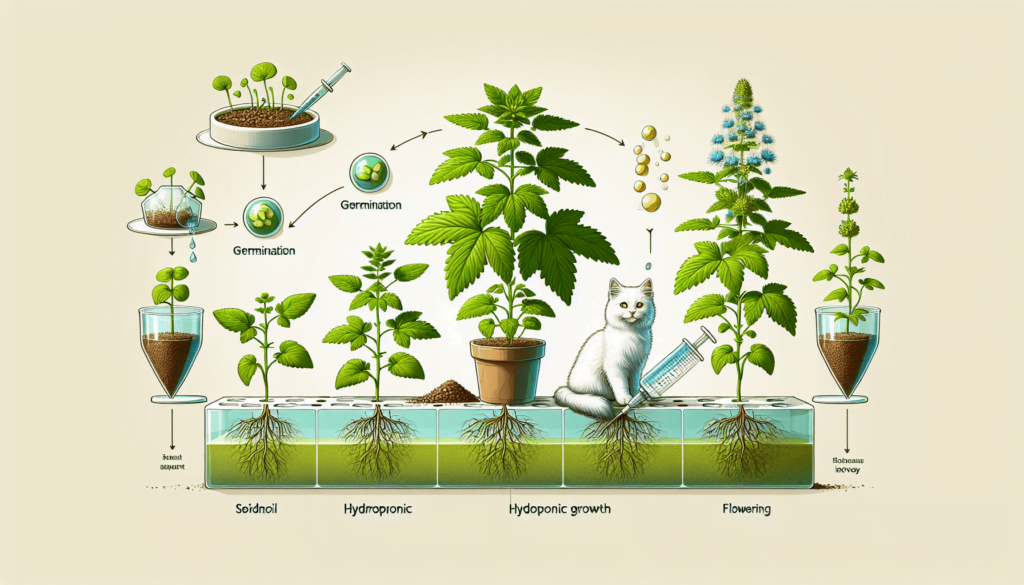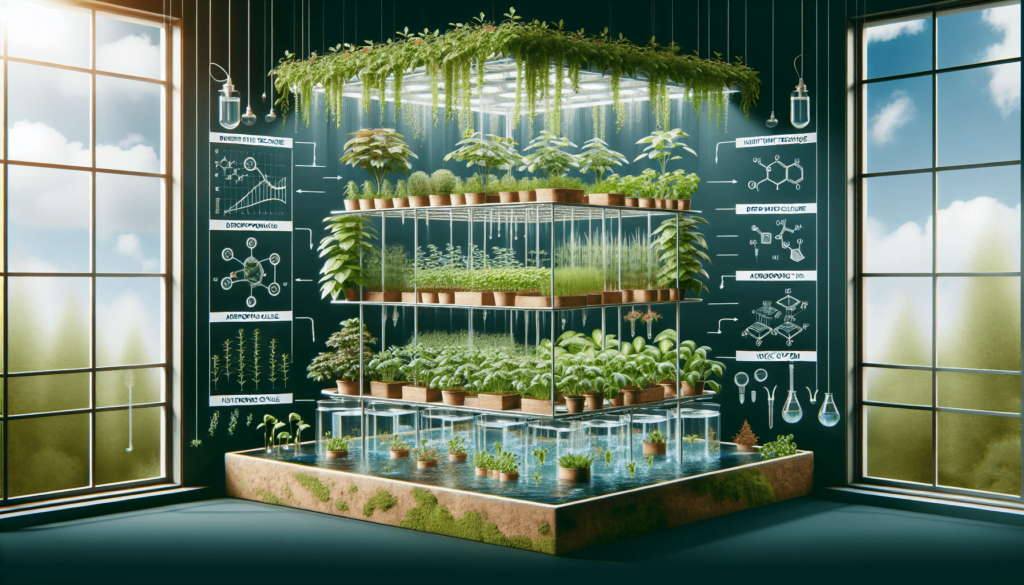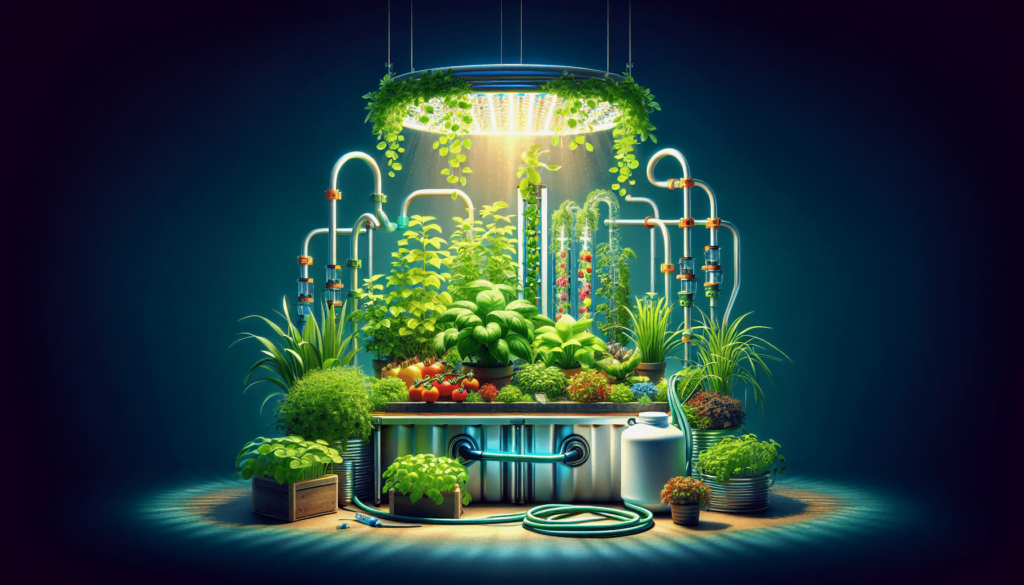Have you ever considered the fascinating realm of hydroponics, specifically regarding the growth of catnip? In the upcoming article, you’ll discover a comprehensive timeline detailing the journey of catnip, from seed to full-grown plant, using a hydroponic system. Learn about the rate of growth, factors affecting its development, and what you can expect at each stage of the process. Your adventure into the captivating world of catnip hydroponics starts here!
Overview of Hydroponics
Definition and principles of hydroponics
Hydroponics, a subset of hydroculture, is a method of growing plants without soil. Instead, plants are grown in an inert medium such as perlite, rockwool, clay pellets, peat moss, or vermiculite. The roots of the plants fully or partially immerse in nutrient-rich water which provides them with everything they need to grow. This technique of farming suits indoor and urban environments. Hydroponics follows the principle of precise control over a plant’s growth condition to maximize yield and maintain optimal health.
Advantages of hydroponic growth
There are numerous advantages of growing plants hydroponically. First, it uses less water compared to soil-based growth, making it more sustainable and environmentally friendly. Second, it allows for a higher control over the growth factors such as nutrients, light exposure, water, and temperature, thereby minimizing the risk of plant disease and pests. Third, hydroponic systems, particularly vertical ones, are spatially efficient as they can accommodate more plants per square foot compared to traditional farming. Lastly, the growth rate of hydroponic plants is significantly higher, resulting in more frequent harvests.
Types of hydroponic systems
There are six common types of hydroponic systems. These include Wick systems, Deep Water Culture (DWC), Nutrient Film Technique (NFT), Ebb and Flow (Flood and Drain), Aeroponics, and Drip Systems. The choice of system heavily depends on the type of plants you aim to grow, your budget, level of expertise, and available space.
Introduction to Catnip
Historical and botanical background of catnip
Catnip, botanically known as Nepeta cataria, is a member of the mint family. It has a long history dating back to ancient Rome and Greece, where it was hailed for its medicinal properties. It’s nicknamed as Catswort or Catmint due to its particular sedative effect on cats. This perennial herb, native to Europe and parts of Asia, produces a strong aroma appreciated by many cats.
Uses and benefits of catnip
Catnip isn’t just for cats. Humans can enjoy a plethora of benefits from this herb too. It can soothe the nervous system, combat insomnia and improve digestion when consumed as a tea. Additionally, it exhibits mosquito-repelling properties. For cats, it acts as a powerful stimulant that causes a range of behaviors, from rolling, jumping, purring and racing around.
Growth conditions and requirements for catnip
Catnip is a hardy herb that thrives best in full sun exposure and well-drained soil. It can tolerate a range of soil types including sandy, loamy and clay soils. It prefers a pH ranging from 6.1 to 7.8 and requires regular watering. Catnip generally grows 3 to 4 feet high and blooms from late spring until autumn.

Hydroponic Cultivation of Catnip
Optimal conditions for growing catnip hydroponically
Growing catnip hydroponically requires certain optimal conditions. The pH balance of the water solution should ideally be between 6.0 and 7.0, with a temperature range of 70-75 degrees Fahrenheit. The light exposure should be 13-16 hours per day. Infusing your nutrient solution with supplemental CO2 will boost the growth rate significantly as well.
Equipment and materials needed
To set up a hydroponic catnip garden, you would need a hydroponic system, seedlings or cuttings, nutrient solution, lighting system, a good-quality fan for air circulation, pH testing and adjusting kit, grow trays and/or net pots, and growing medium.
Steps to set up a hydroponic catnip garden
- Start by choosing and installing your hydroponic system. Make sure it’s located in a space that can be easily temperature regulated and receive ample light.
- Prepare your catnip cuttings or seedlings and place them in the growing medium of your choice.
- Test the pH of your nutrient solution and adjust it correspondingly to reach the optimal range.
- Make sure your lighting system is functioning and set it up correctly.
- Finally, maintain a strict schedule of watering, light exposure, temperature control, and nutrient replenishment.
Stages of Catnip Hydroponic Growth
Seeding and germination
The first stage of your hydroponic catnip growth process is seeding and germination. During this stage, your catnip seeds are sown in nutrient-rich growing mediums. These seeds start to sprout in 7-10 days under optimal temperature and moisture conditions.
Vegetative growth
Once the seed germinates, it moves into the vegetative stage. This is where the plant begins to develop foliage and a strong root system. At this stage, your catnip requires lots of light and nutrients, particularly nitrogen.
Budding and flowering stage
The next stage of growth involves budding and flowering. It’s when your catnip begins to develop flower buds, signaling it’s moving into its reproductive phase. At this point, it’s crucial to reduce the light exposure to just 12 hours a day.
Harvest stage
Finally, the catnip plant reaches the harvest stage. Your catnip’s leaves will be mature and strong, perfect for harvesting. It’s essential to harvest catnip before full flower maturity to ensure the highest potency.

Timeline of Catnip Hydroponic Growth
Duration of the germination phase
In a hydroponic setup, the germination phase of catnip usually takes around 7-10 days.
Length of the vegetative phase
Post germination, catnip moves into the vegetative phase which lasts about 5-7 weeks. This is when the plant builds up its leaf mass and strengthens its roots.
When to expect budding and flowering
The budding and flowering can be expected after the vegetative phase, approximately within 7-9 weeks after seeding.
When to harvest hydroponic catnip
The ideal time to harvest hydroponically grown catnip is when it has begun blooming, but not fully flowering. This usually happens around the 10th week mark.
Monitoring and Maintenance of Hydroponic Catnip
Water and nutrient management
Water and nutrient management is a vital part of hydroponic gardening. It’s essential to maintain the concentration of nutrients in the water at optimal levels, ensuring your catnip receives everything it needs to thrive. Routine checks on pH and nutrient strength will ensure a balanced growing environment for the catnip.
Lighting and temperature regulation
Regulating lighting and maintaining optimal temperature is another crucial aspect of hydroponic gardening. For catnip, a light exposure of 13-16 hours a day is ideal, and it enjoys temperature ranges of 70-75 degrees Fahrenheit.
Controlling pests and diseases
Although hydroponics reduces the chance of pest infestations compared to traditional soil gardening, it’s important to be vigilant for signs of pests or plant disease. Proper air ventilation, maintaining optimal growth conditions, and cleanliness can go a long way in preventing such issues. If you do spot pests or diseases, acting quickly with appropriate treatment is crucial.
Harvesting and Storing Hydroponically Grown Catnip
Best practices for harvesting catnip
When harvesting catnip, it’s advisable to cut the stems at their base, leaving about an inch from the ground. This encourages the plant to keep producing. Additionally, harvesting during midday, when the leaves have minimal moisture content, can prevent mold during drying.
Post-harvest handling
After harvesting, catnip should be prepared for drying. Tie the stems together and hang them upside down in a ventilated, dark place. Let the leaves dry until they crumble easily between your fingers, which usually takes 1-2 weeks.
Methods of storage to maintain freshness and potency
Once completely dry, catnip should be stored in an airtight container and kept out of direct light to maintain its freshness and potency.
Difficulties and Solutions in Hydroponic Catnip Growth
Common problems encountered while growing catnip hydroponically
Growing catnip hydroponically does come with its own set of challenges. Common problems include nutrient imbalances, pH fluctuations, inadequate lighting, incorrect temperature, and occasional pest infestations.
Potential solutions and remedies
Potential solutions include adjusting nutrient concentrations and pH levels, ensuring the lighting and temperature meet the plant’s needs, and treating pest and disease outbreaks quickly with appropriate treatments.
Preventive measures to ensure healthy growth
Proper planning and maintenance play a huge role in preventing problems from arising. Some preventive measures include maintaining a clean grow space, ensuring all equipment functions as it should, monitoring plants regularly, and reacting promptly to any changes.
Advantages of Hydroponic Catnip over Soil-Grown Catnip
Growth rate comparison
Hydroponically grown catnip typically has a faster growth rate as compared to soil-grown catnip, thanks to the high level of control over the growth conditions.
Nutrient content analysis
Hydroponic catnip often has higher nutrient content as the plants have uninterrupted access to required nutrients.
Taste and aroma differences
Hydroponic catnip typically has a stronger aroma and taste, possibly due to the enhanced nutrient absorption.
Case Studies of Hydroponic Catnip Growth
Examples of successful hydroponic catnip growth initiatives
There have been numerous successful initiatives where catnip was grown hydroponically. These cases often involved hobbyist gardeners, but also professional growers aiming for a high yield and quality product for market sales.
Lessons learned from the case studies
These case studies highlight that proper planning, consistent maintenance, and quick reaction to problems are critical factors in achieving successful hydroponic catnip growth. They also underscore the importance of understanding the unique needs of catnip to ensure optimal condition.
How these lessons can be applied by individual growers
Individual growers looking to pursue hydroponic catnip cultivation can apply these lessons. By planning ahead, maintaining a strict routine, adjusting conditions as needed, and being proactive about problem-solving, growers can expect a fruitful hydroponic catnip garden.
Related Products…
Disclosure: As an Amazon Associate, I earn from qualifying purchases.
Forum
Got something to share or a question to ask? Jump in and start a conversation! Whether it’s tips, advice, or just sharing your experiences, we’d love to hear from you. Don’t be shy—your input could inspire or help someone else!- This forum has 1 topic, and was last updated 9 months, 1 week ago by .
- Topic
- Voices
- Last Post
- You must be logged in to create new topics.




